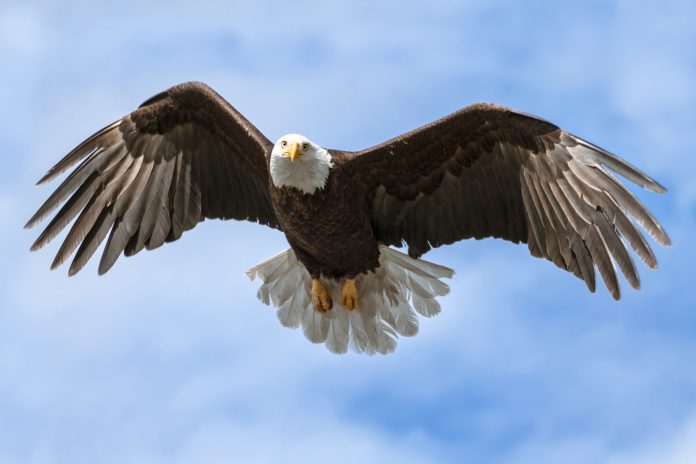The common image of a bald eagle swooping over a lake or river to snag a fish with its outstretched talons can evoke chills or patriotic thoughts.
But Shane Kasson, manager of the Salt Plains National Wildlife Refuge, reminds that the national bird isn’t always so regal. He sees it every year when up to 2,000 bald eagles spend the winter in Oklahoma.
“They’ll eat just about anything,” Kasson says. “The salt plains have a lot of the eagles’ food – ducks, geese and cranes. Eagles prey on those birds. They’ll find an injured, sickened or weakened bird and separate it from the flock.
“They’re an opportunistic predator. They’ll eat turtles, carrion, whatever.”
The Salt Plains refuge, off Oklahoma 38 in Alfalfa County, has its annual eagle watch Jan. 4-5 and Jan. 11-12 by reservation only. (Call 580-626-4794 to hold a spot.)
“We take 12 to 15 people out to an area that’s normally closed to the public,” Kasson says. “We leave the headquarters between 3:30 and 4 p.m. and stay out until dark or a little later. On the lake, we could see as many as 75 to 80 eagles and maybe 15 to 20 come in to roost at that site.”
FUN FACTS
Population
210Pheasant hunting
Jet is prime for pheasant hunting; the season ends Jan. 31.Six bachelor brothers
Joseph, Trigg, Newt, Warner, John and Richard Jett homesteaded adjacent parcels of land in the Cherokee Strip in 1892.The dropped T
Mayor Jim Blackledge, a resident for 55 years, says the legend is that the original post office lost a T in Jett on the sign in the late 1890s and people forgot about it. When a new post office was built decades later, the name Jet went with it.Shootin’ balloons
Dena and Eddie Miller have a horse arena in Jet where they conduct clinics for the sport of Cowboy Mounted Shooting, in which marksmen and women on horseback take aim at balloons attached to fixed poles.
One might figuratively call the wildlife refuge a hidden gem because of its remote location (tiny Jet is 14 miles south); the literal sense can also apply since unique selenite crystals draw thousands of people to the park each year.
Some crystals are shaped like hourglasses, formations not known to occur anywhere else in the world.
The digging area is closed from Oct. 16 to March 31 because the refuge is a crucial stop for endangered whooping cranes on their vernal northern migrations and autumnal southern migrations. They stay from a day to a week, Kasson says.
“We see about 25 to 50 whoopers a year,” he says. “There are only 430 non-captive left in the world.”
Kasson says the best place to see a whooper is off Eagle Roost Trail, which the species prefers because, as the tallest North American bird, it can espy humans from a distance.
The interior least tern, another endangered species, also nests at Salt Plains.
“The salt flats are important to a lot of migratory birds,” Kasson says. “For instance, the snowy plover – designated as a species of concern – nests right on the flats. This refuge supports about 25 percent of that bird’s entire population.”























